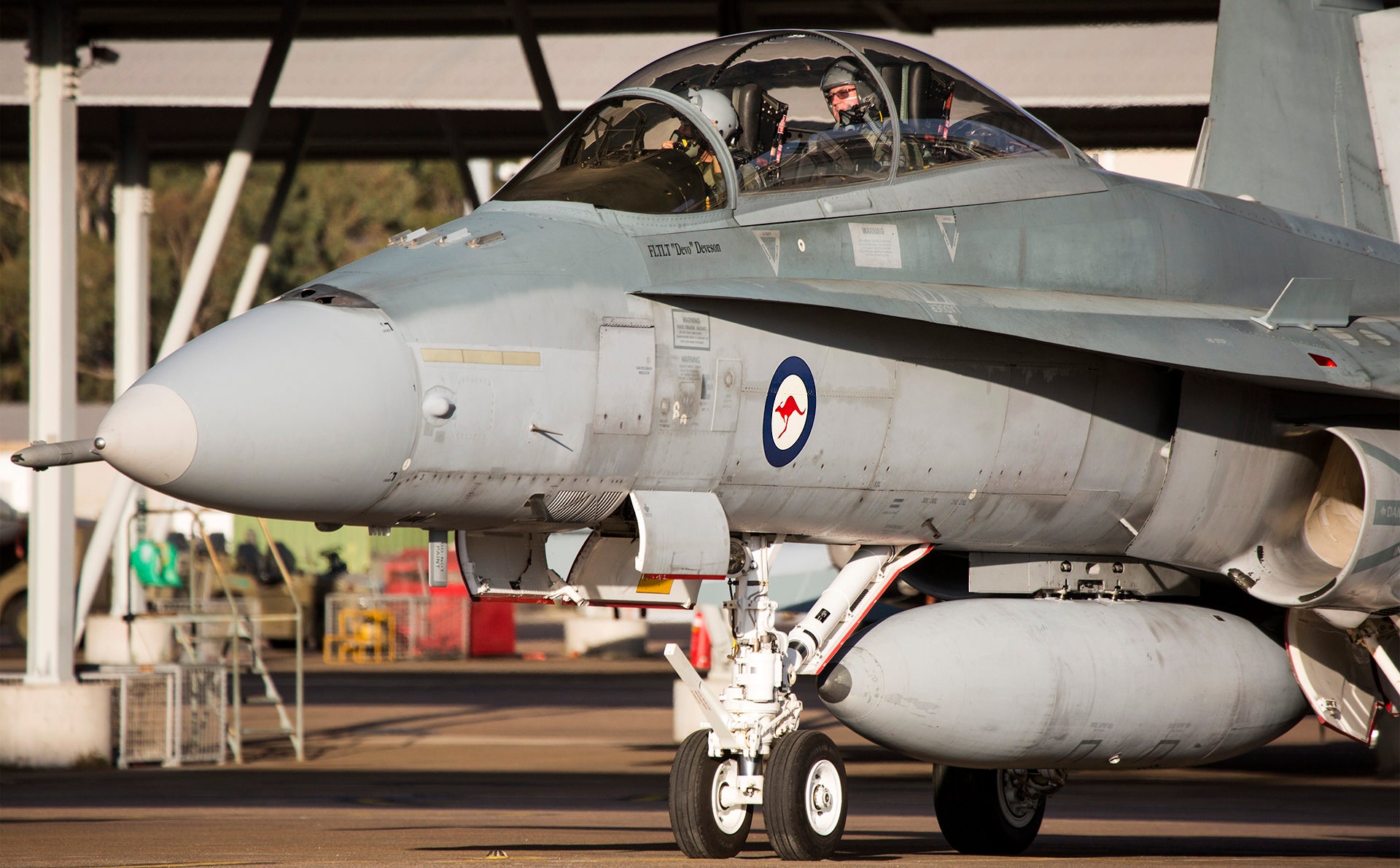One of the strangest sagas in defense procurement over the last decade has been Canada’s meandering road to a new fighter aircraft to replace, or even augment, the country’s relatively small fleet of aging CF-18 Hornets. We have talked in great depth about this issue, and although the Super Hornet is clearly the right jet for Canada, a recent trade spat has made it politically unsavory for the Trudeau Administration to order even a handful of the strike fighters as a interim measure before selecting a fighter to replace the entire CF-18 fleet sometime in the future.
In the meantime, Ottawa quickly pivoted to looking for possible second-hand Hornet options to help bolster their current fleet of roughly 75 CF-18s. After seemingly leaving no stone unturned, Australia’s F/A-18A/B Hornet fleet, which is nearly as old, seems to be where Canada has the best shot at attaining extra airframes without having to wait too long or go through Boeing to obtain them.
From most accounts, Australia has kept its F/A-18A/B fleet in remarkable fighting condition. These jets served as the country’s only fighter for many years, and have seen action in conflict zones half way around the globe—most recently flying missions against ISIS in Iraq and Syria. But with a burgeoning Super Hornet fleet and F-35s on the way, the Aussies can probably spare some of their legacy Hornets in the near term.

Considering Canada seems to have few other options, and has now officially presented Australia with a letter of interest in acquiring some of its surplus Hornets, Ottawa isn’t exactly in the best position to negotiate on price. In fact they are in a pretty damn lousy one. Time has run out on kicking the proverbial can down the road, and their current Hornet fleet needs help now if it is to survive well into the next decade. Simply put, beggars can’t be choosers, and since the Trudeau Administration is willing to embargo the purchase of new Super Hornets from Boeing, Australia may be the only show in town short of acquiring an entirely different type.
Snapping up Eurofighter Typhoons or leasing Saab JAS-39 Gripens may seem like a good idea, but the cost of introducing another fighter type into the RCAF arsenal is a nonstarter considering the force’s frugal budget, and especially considering yet another new type could be introduced less than a decade later after a final replacement fighter is selected. Training, support, logistical channels, tactics development, even basing requirements differ drastically from fighter to fighter and from manufacturer to manufacturer, so procuring another distinct fighter type as an interim solution isn’t going to happen unless there is no other choice. In the end, Canada would be better off paying top dollar for a couple dozen Aussie CF-18s than going down such a route.

Australia originally ordered 57 F/A-18As and 18 F/A-18Bs, for a total of 75 airframes, in 1981. The vast majority of the jets were assembled in Australia. 71 are still flying today, which is pretty amazing in itself and a testament to the maintainers and pilots who worked with the fleet over the years. Australia’s Hornets are also close to the same block and age as Canada’s jets and have received similar upgrades throughout the years.
The plan is for the Australian Hornet fleet to be divested as a near equal number of F-35As—72 at this time but that number could grow—come online. The process that should be completed by 2023 with initial operating capability (IOC) slated for 2020.

It will be interesting to see what type of deal terms Australia replies to Canada with for their used Hornets. The force could likely afford to lose a dozen of the jets in the very near term, and then more as F-35 deliveries continue and IOC approaches, although RAAF will still have to mitigate its risk to some degree in regards to the F-35 timeline. But after the F-35A’s IOC is achieved in 2020, the Australian legacy Hornet fleet will likely dwindle rapidly.

Who knows, maybe Australia will reply with an “all or nothing” proposition, in which the buyer has to take the whole fleet or none. Either way, if Canada receives dozens of ex-RAAF F/A-18s they should be able to spread flying hours around a larger fleet and have plenty of spares to lessen operating costs and increase aircraft availability rates. This, paired with further upgrades and a service life extension program on some of their existing aircraft, could push out the need for a replacement fighter purchase into the latter half of the 2020s, if not the early 2030s.

Contact the author: Tyler@thedrive.com
